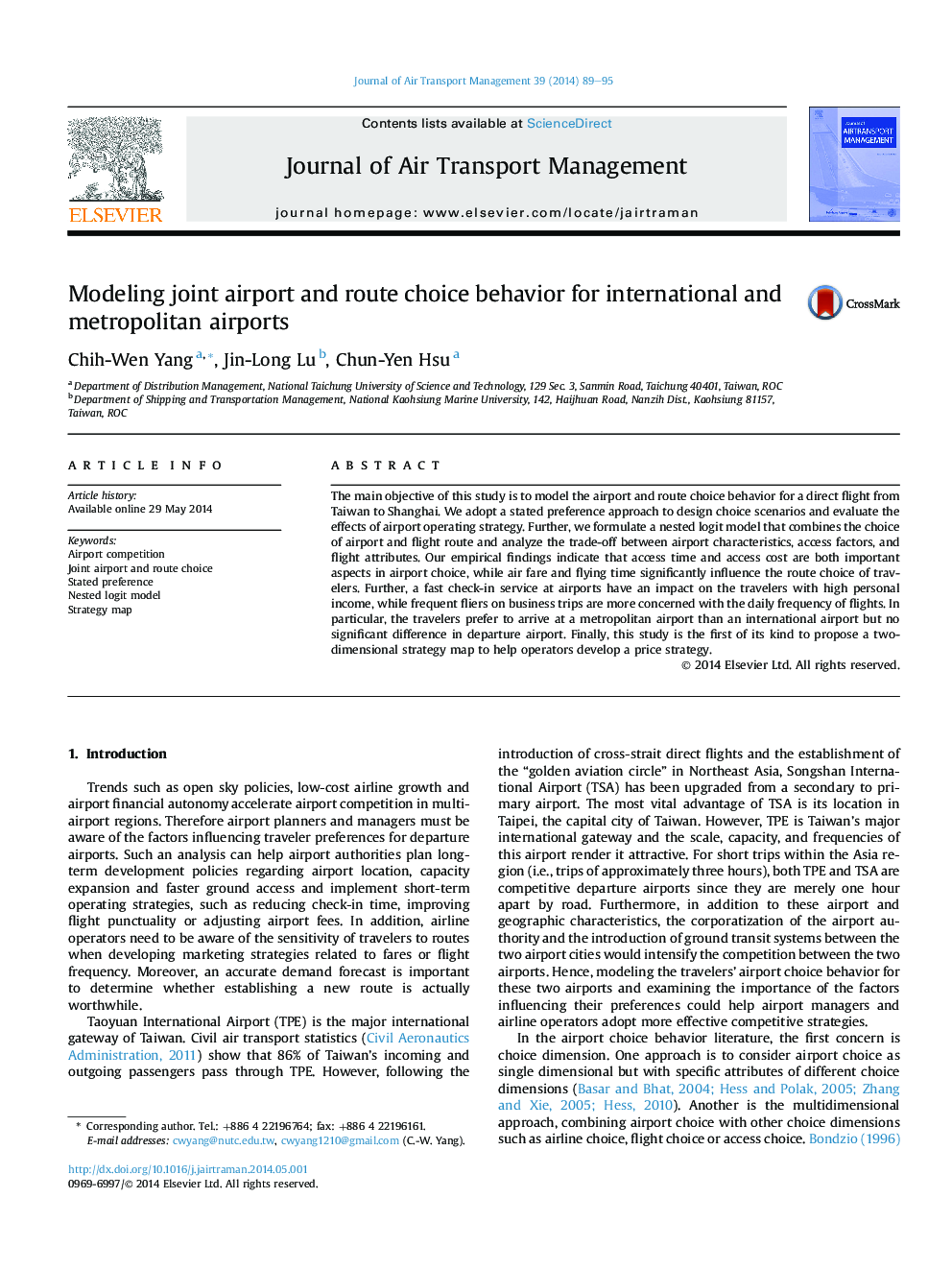| Article ID | Journal | Published Year | Pages | File Type |
|---|---|---|---|---|
| 1030847 | Journal of Air Transport Management | 2014 | 7 Pages |
•A NL model was developed to investigate the jointing choice of airport and route.•A 2D map identifies the active/passive and rising/falling of pricing strategy.•Access time and flight inertia are influential factors for joint choice behavior.•Arrival passengers prefer metropolitan airport rather than international airport.•Active discounting effectively assists leading operators to resist new competitors.
The main objective of this study is to model the airport and route choice behavior for a direct flight from Taiwan to Shanghai. We adopt a stated preference approach to design choice scenarios and evaluate the effects of airport operating strategy. Further, we formulate a nested logit model that combines the choice of airport and flight route and analyze the trade-off between airport characteristics, access factors, and flight attributes. Our empirical findings indicate that access time and access cost are both important aspects in airport choice, while air fare and flying time significantly influence the route choice of travelers. Further, a fast check-in service at airports have an impact on the travelers with high personal income, while frequent fliers on business trips are more concerned with the daily frequency of flights. In particular, the travelers prefer to arrive at a metropolitan airport than an international airport but no significant difference in departure airport. Finally, this study is the first of its kind to propose a two-dimensional strategy map to help operators develop a price strategy.
